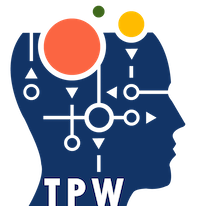Empowering leadership is a process whereby leaders create a supportive environment and delegate subordinates’ power and autonomy in their work and decision-making (Zhu et al., 2019). There are various ways to do this. Empowering leaders delegate responsibility and authority to make decisions to the employees. It encourages the employees to come up with and try new ideas. Sharing information and allowing the subordinates to give their opinion also is another trait of an empowering leader. Empowering leaders optimize working conditions for the employees by increasing cognitive resources and demands. This enhances employee work meaningfulness as well.

The benefits of empowering leadership are many. It is positively related to work engagement and employee innovative behaviour. It also promotes and improves creativity among employees. Research has linked empowering leadership to the psychological empowerment of the followers, leading to improved attitude and work behaviour among them. Citizenship behaviour among employees too is influenced by empowering leadership. Citizenship behaviour refers to behaviours that show altruism, conscientiousness, courtesy for co-workers, and respect towards the organisation. The employees, thus, are more willing to take on extra work, volunteer to support the organisation outside of their job role and help their co-workers. It also improves the trust employees have in the leaders, and they tend to not see the leaders as people who would exploit them. Empowerment leadership also has a positive effect on job satisfaction among individual employees and groups in the workplace (Fong and Snape, 2015). A 2020 study by Tripathi and Bharadwaja studied the impact empowering leadership had on perceived stress and employee’s mental health. It was conducted in the Indian context. The study found that empowering leadership mitigated perceived stress in employees through psychological empowerment. The study parallelly found that empowering leadership is positively correlated to psychological empowerment in the employees.

In a 2016 study by Cheong, et. al., empowering leadership was researched upon, where its two major effects were identified. The study recognizes that most research is done on the topic of empowering leadership studies the positive outcomes of it. The study identifies that empowering leadership has two faces, one that is enabling and one that is burdening. The enabling side of empowering leadership promotes the follower’s self-efficacy and performance. On the other hand, the burdening aspect of empowering leadership increases the follower’s job-induced tension. This in turn reduces the positive influence that empowering leadership could have had on the follower’s work performance. A mistake to avoid in order to reduce the burdening effect of empowering leadership is to ensure that the leader doesn’t treat individual subordinates differently in terms of empowerment. At the same time, the leader needs to take into account individual differences while allocating responsibilities. Employee autonomy, an important aspect of empowering leadership, is a key factor in aiding creativity. However, if the employee is not ready to take on the responsibilities that come along with gaining autonomy, it will lead to stress and worry among them. A 2016 study by Wong and Geissner finds that employee’s perception of being empowered depends on their expectancy regarding what extent they want to be empowered. Thus, empowering leadership works when the leader’s way and degree of empowering align with the follower’s expectation.

In order for empowering leadership to work, it is necessary that the leaders build a good relationship with the employees. The leaders need to ensure that they are viewed positively by the employees. For example, leaders need to make sure that when decision-making is given to the subordinates, it is because the leader is giving them an opportunity for development and not because the leader is trying to avoid making difficult decisions themselves. It is also important to look at between-group differences in empowering leadership, to ensure there is no perception of bias among the employees in the different groups. Empowering groups and teams are as necessary as empowering individual employees in order for the organization to achieve its goals. In organizations with greater power distance, human resource practices should be incorporated in management training for the effective delegation of authority, and organizational efforts need to be made to educate managers on how to support and coach subordinates while also encouraging them to participate in work decision making (Tian & Zhang, 2020).
References
Cheong, M., Spain, S. M., Yammarino, F. J., & Yun, S. (2016). Two faces of empowering leadership: Enabling and burdening. The Leadership Quarterly, 27(4), 602-616.
Fong, K.H, & Snape, E. (2015). Empowering Leadership, Psychological Empowerment and Employee Outcomes: Testing a Multi-level Mediating Model. British Journal of Management, Vol. 26, 126–138.
Tian, G., & Zhang, Z. (2020). Linking empowering leadership to employee innovation: The mediating role of work engagement. Social Behavior and Personality: an international journal, 48(10), 1-8.
Tripathi, N., Bharadwaja, M. (2020). Empowering Leadership and Psychological Health: The Mediating Role of Psychological Empowerment. Employ Responsibilities and Rights Journal, 32, 97–121.
Wong, S. I., & Giessner, S. R. (2018). The Thin Line Between Empowering and Laissez-Faire Leadership: An Expectancy-Match Perspective. Journal of Management, 44(2), 757–783.
Zhu, J., Yao, J., & Zhang, L. (2019). Linking empowering leadership to innovative behavior in professional learning communities: The role of psychological empowerment and team psychological safety. Asia Pacific Education Review, 20, 657–671.


Comments 1
This is very informative and up to the present trends of leadership.